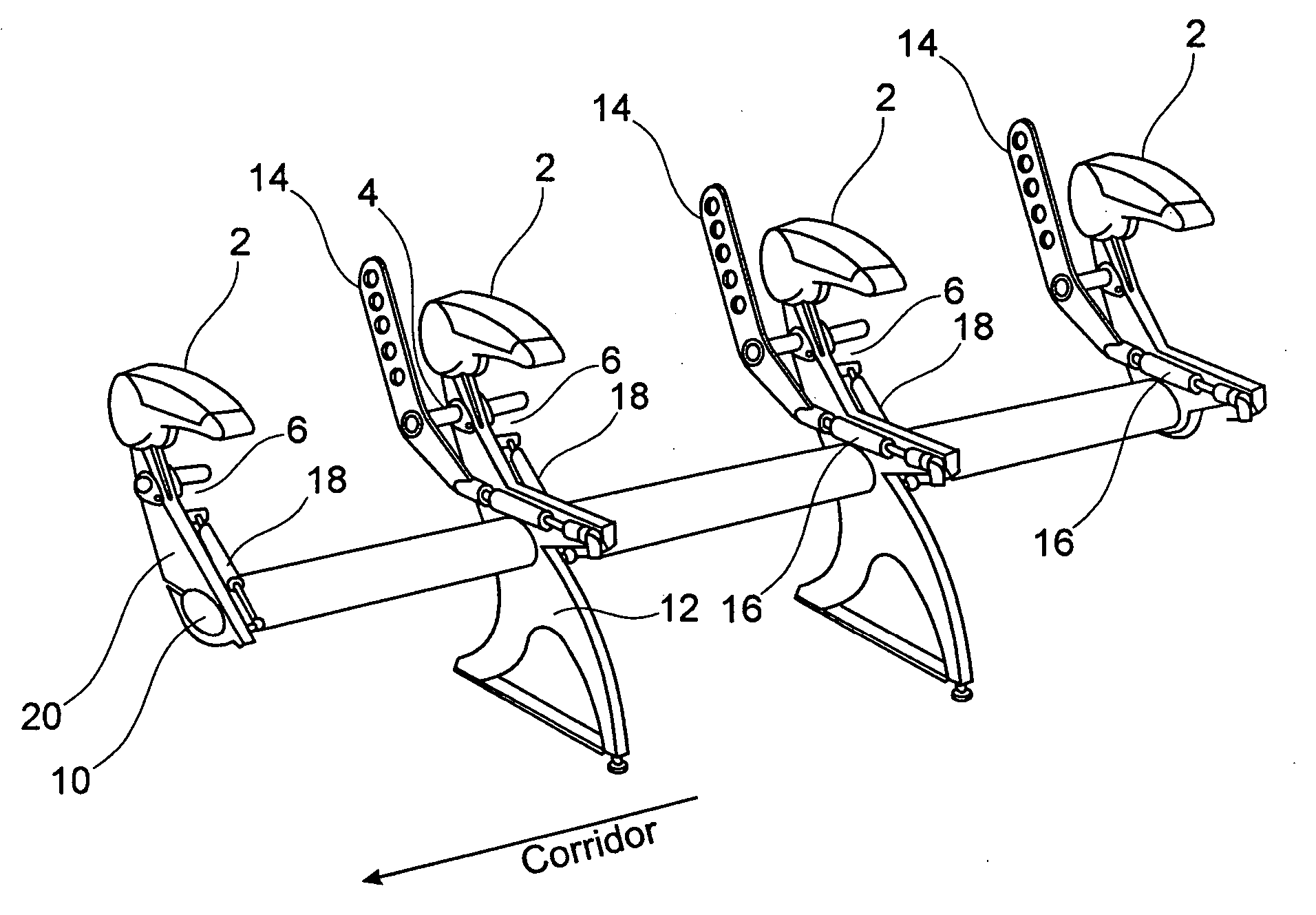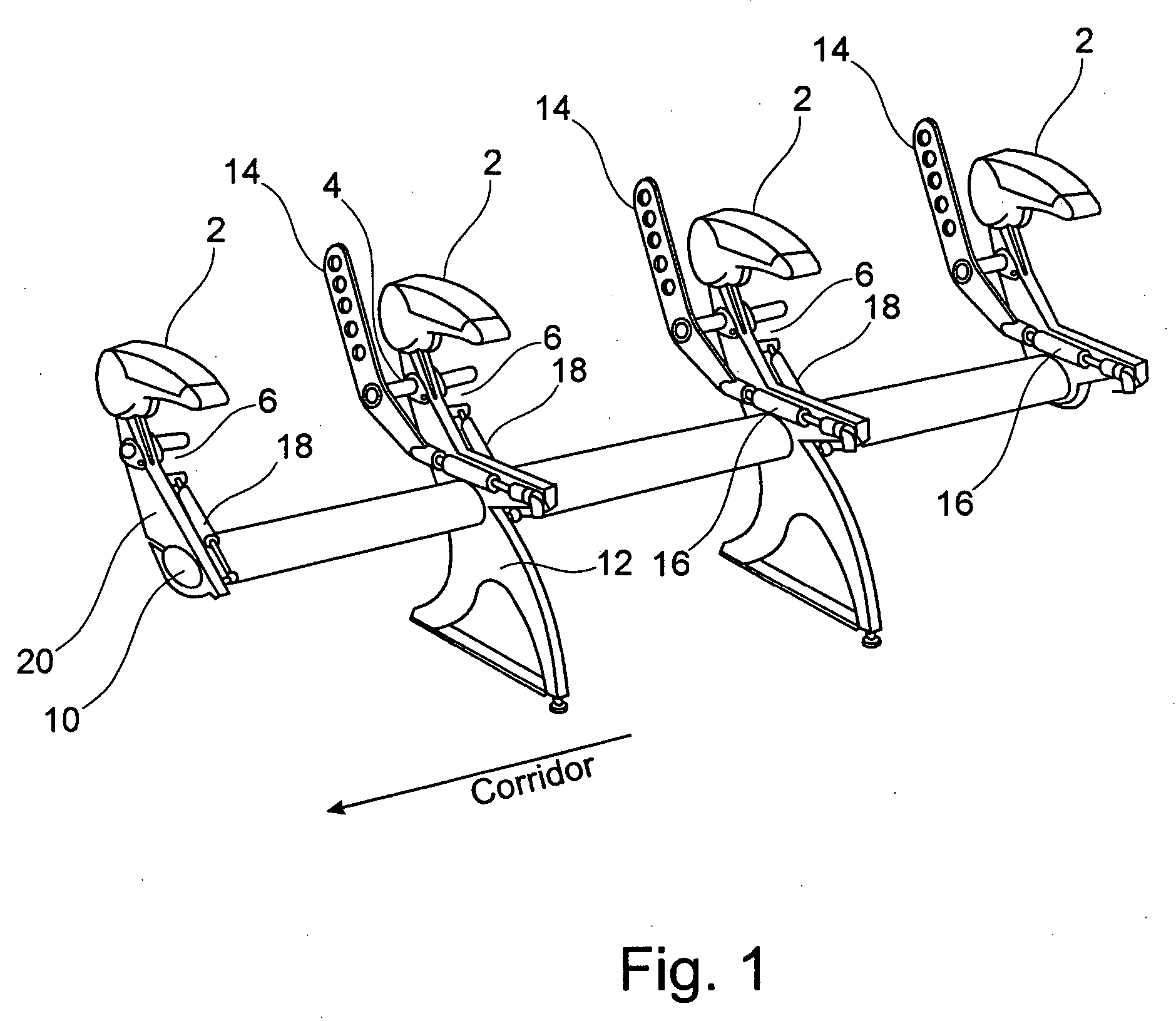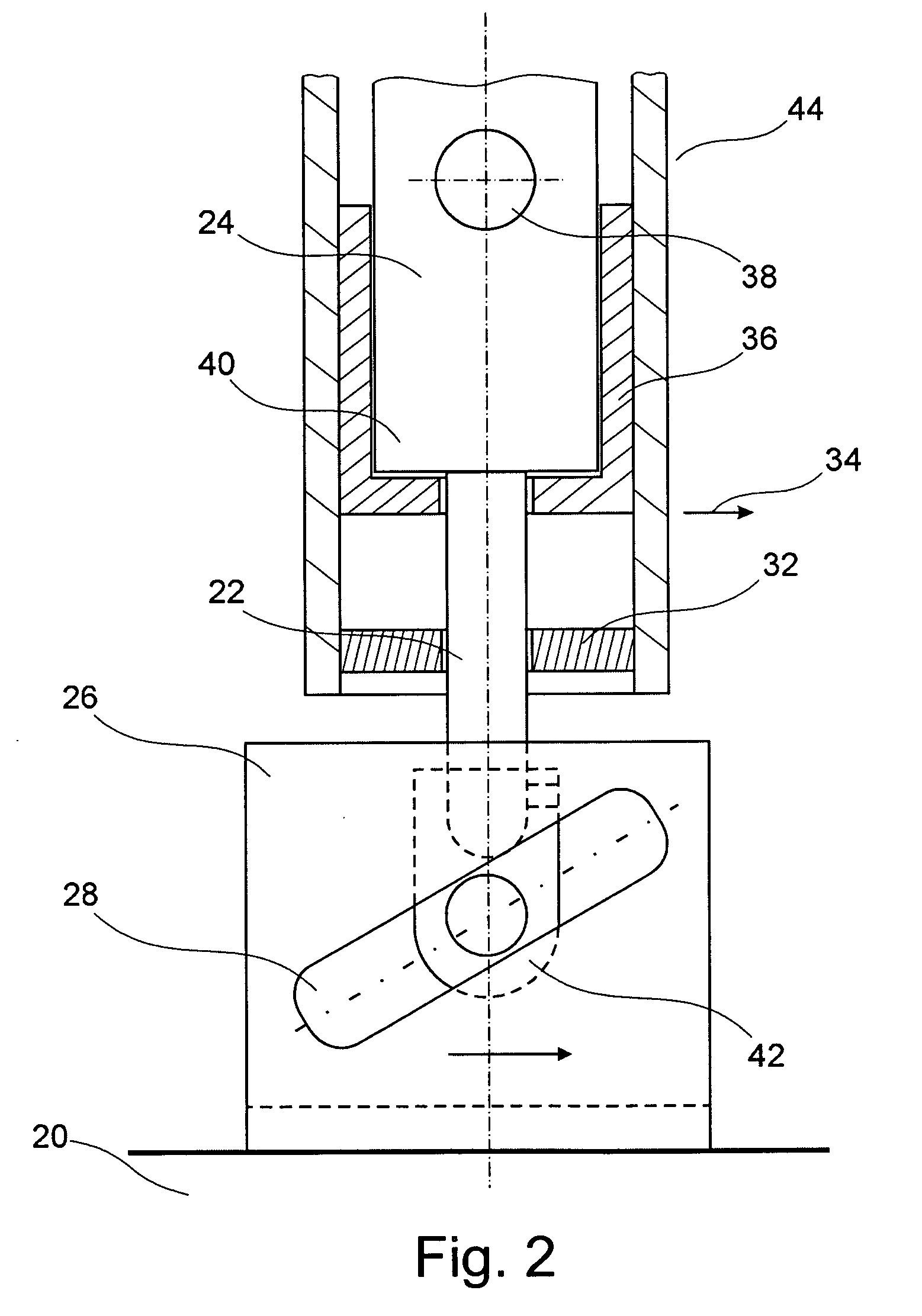Flight passenger seat with an integrated spring element
a passenger seat and spring element technology, applied in the field of seats and seat groups for airplanes, can solve the problems of large time expenditure, manual operation of the folding mechanism, and the possibility of deadlock, and achieve the effect of high design freedom
- Summary
- Abstract
- Description
- Claims
- Application Information
AI Technical Summary
Benefits of technology
Problems solved by technology
Method used
Image
Examples
Embodiment Construction
[0034] In the following description, for the same or corresponding elements, the same reference numerals are used.
[0035]FIG. 1 shows a schematic three dimensional side view of a frame of a seat group according to the present invention. This frame includes a continuous support spar 10 supported by two frame feet. Further, the seat frame is connected with seat dividers 20, which laterally grasp around the back elements. Arm rests 2 are mounted at the top of the seat dividers 20. The drawing in FIG. 1 shows a frame for a seat group, at the left side of which (in the shown exemplary embodiment) there is the corridor of an airplane. Mirror-inverted, this seat group would be applied at the other side of the corridor. For clearing traffic areas, appliances are provided, which are adapted to pivoting of seat elements (the seat elements are not shown in FIG. 1). A second reset element 18 acts on a pivoting lever 6, connected with a support bolt 4 in a torque proof manner. At the support bol...
PUM
 Login to View More
Login to View More Abstract
Description
Claims
Application Information
 Login to View More
Login to View More - R&D
- Intellectual Property
- Life Sciences
- Materials
- Tech Scout
- Unparalleled Data Quality
- Higher Quality Content
- 60% Fewer Hallucinations
Browse by: Latest US Patents, China's latest patents, Technical Efficacy Thesaurus, Application Domain, Technology Topic, Popular Technical Reports.
© 2025 PatSnap. All rights reserved.Legal|Privacy policy|Modern Slavery Act Transparency Statement|Sitemap|About US| Contact US: help@patsnap.com



